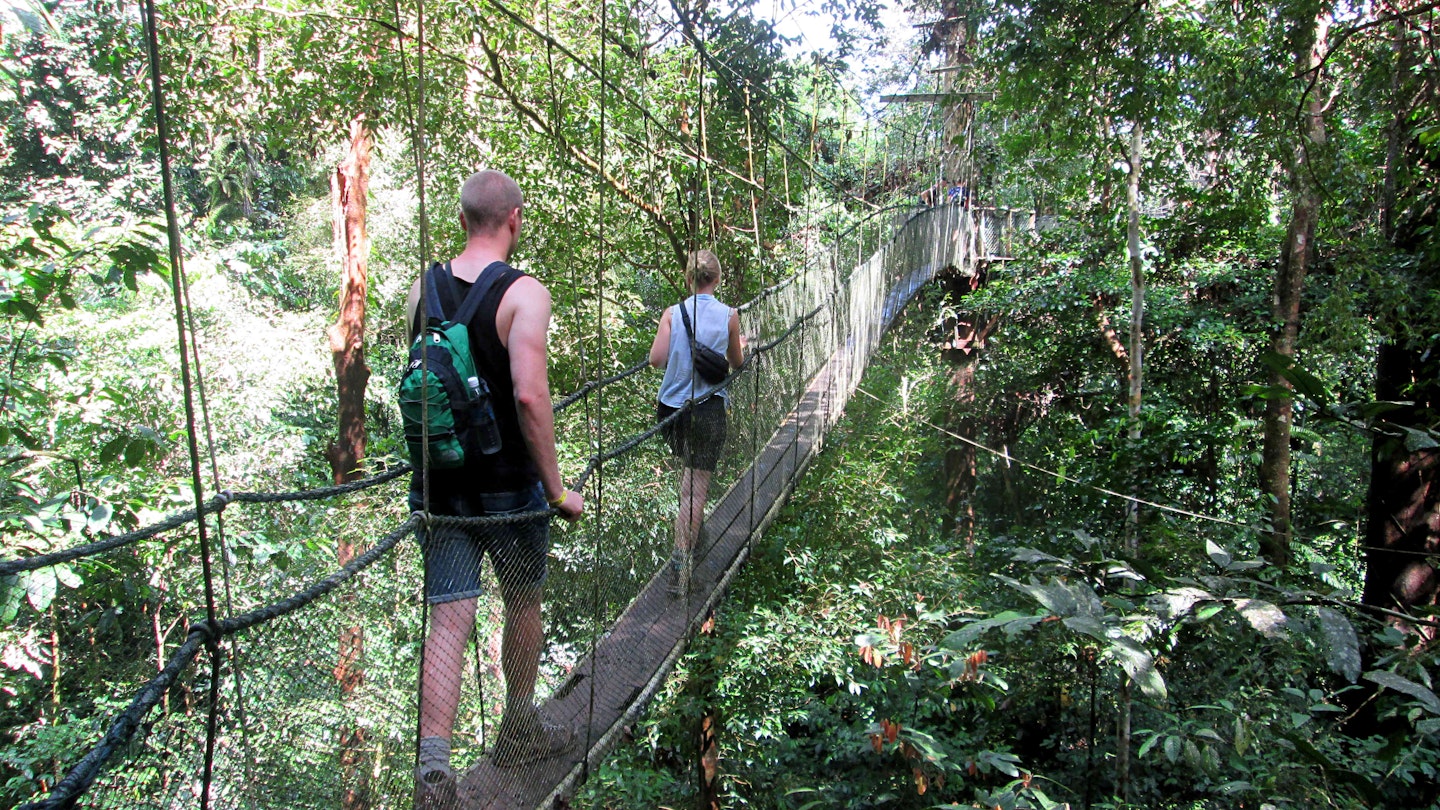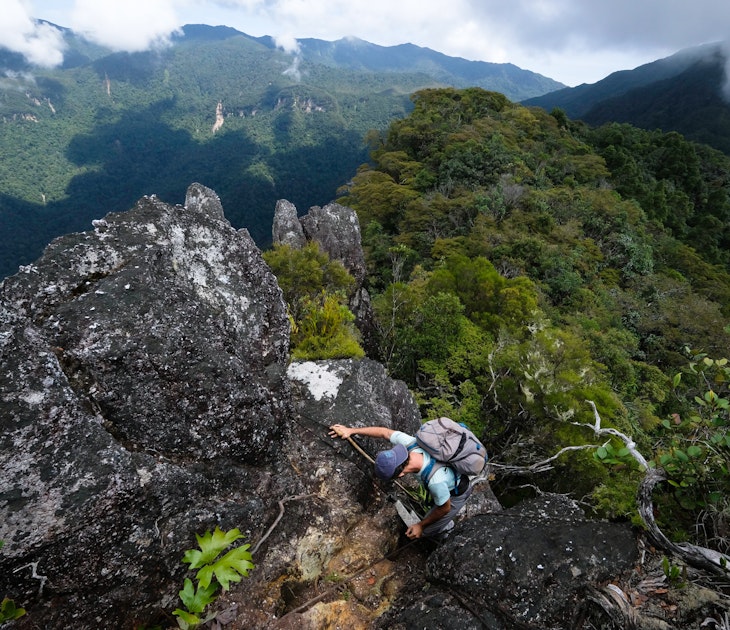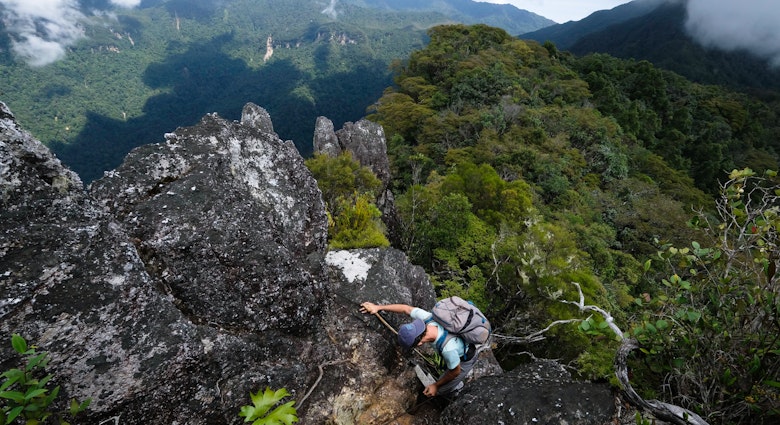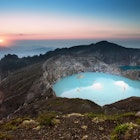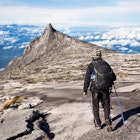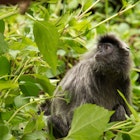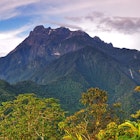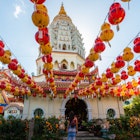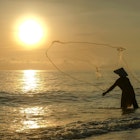Home to some of the world’s biggest caves and most diverse ecosystems, superlatives abound when it comes to describing Sarawak’s national parks. So blessed is this Malaysian state with a wealth of natural wonders that it can be difficult deciding exactly which parks to visit. To help you make your decision we’ve come up with some helpful pointers about what’s on offer where, using the cities of Kuching (in Sarawak’s west) and Miri (in its centre, close to Brunei) as the jumping off points for some spectacular exploration.

Around Kuching
Flora and fauna: Bako National Park
If you’ve come to Borneo to see rainforest animals in their natural habitats, Bako National Park is the perfect place to start, located less than an hour’s drive from the state capital of Kuching, on a rocky peninsula jutting out into the South China Sea. The park attracts visitors keen to see its most celebrated residents, the distinctive pot-bellied, red-furred proboscis monkeys, who lounge around close to the shore. But there’s more much more wildlife on offer, with the chance to spot silver-leaf monkeys, cheeky long-tailed macaques, scaly monitor lizards and bearded pigs, who are often seen rummaging around park HQ. The mangroves here are home to saltwater crocodiles, and as many as 190 kinds of birds have been identified within the park boundaries.

Once you’ve had your fill of the fauna, it’s the flora’s turn to grab your attention – Bako is a wonderfully accessible place to experience almost every type of vegetation found in Borneo. From the terminal at Kampung Bako, a 30-minute boat trip takes you to park HQ, from where a range of hiking trails lead through the various terrains, including beach and cliff vegetation, heath forest, mixed dipterocarp forest, grasslands and peat swamp forest. It’s possible to hike the trails in a loop or arrange to be picked up by boat from one of the park’s hidden coves.
Bako can be visited as a day trip from Kuching, but staying overnight in the park’s accommodation means you can do the ranger-led night walk: nocturnal creatures living here include the flying lemur, mouse deer and several species of fruit and insect-eating bats.
On the trail of the Rafflesia: Gunung Gading National Park
Gunung Gading National Park is the best place in Sarawak to see the world’s largest flower, the Rafflesia, which measures up to 75cm in diameter. The park is located 85km northwest of Kuching making it possible to visit as a day trip – buses run between Kuching and Lundu, about 3km from the park. Shady trails lead through dense primary rainforest, past waterfalls and streams, up to the summit of Gunung Gading. But while hikers who make the ascent are rewarded with fantastic views, it’s the park’s famous flower that attracts the crowds.

Rafflesias are rare and only in flower for up to a week at a time, with no set season, so the chances of seeing one is largely a matter of luck. Call the park office in advance to see if a flower is in bloom; when a Rafflesia has been spotted, registered freelance guides will be on hand at park HQ to take visitors to see it.
Palms and frogs: Kubah National Park
If you’re a palm tree enthusiast or particularly keen on frogs you won’t want to miss Kubah National Park, home to large numbers of different species of both. The palmetum walking trail showcases the variety of palm species found in Kubah’s forests, while the dusk chorus of frog croaks sounds like a rainforest concert (for a taster listen to this recording). Even if palms and frogs are not your passion, the park is worth a visit for its forest trails, waterfalls and accessibility – it’s located just 22km west of Kuching.

Around Miri
Caves, mountains and pinnacles: Gunung Mulu National Park
In a state endowed with many amazing national parks, Gunung Mulu is the pick of the bunch. You’ll need to fly here (there are daily flights from Miri) and guide fees and accommodation are not cheap, but most visitors would agree that extensive cave systems, hiking and trekking options and the sheer natural beauty of the canyons, rivers and rainforest-covered mountains of this UNESCO World Heritage Site more than justify the time and expense involved.
The numerous caves – which include the vast Sarawak Chamber (the largest in the world by area) – can be explored on guided tours, while serious spelunkers come to Mulu for adventure caving. If you’re physically fit and up for a multi-day trek, options (to be booked in advance) include the Pinnacles, a challenging, steep and sweaty climb to view these unusual, razor-sharp shards of limestone bursting from the mountainside like the spikes on a hedgehog’s back, and climbing Gunung Mulu itself.

Physically demanding treks and adventure climbing aside, there are plenty more relaxing activities to fill your days at Mulu: a morning canopy walk that brings you eye to eye with hornbills and monkeys; a gentle daytime hike along easy to follow boardwalk trails through the forest; the unforgettable dusk exodus of millions of bats from the Deer Cave, flying together in a swirling, corkscrewing cloud to protect them from predators; and spotting stick insects, spiders and other nocturnal creatures on a guided night walk.
Caves, bats and swiftlets: Niah National Park
Niah National Park is famous for its vast limestone caverns, including the Great Cave, one of the largest in the world. If you are planning to visit Mulu, don’t mistake Niah’s caves as more of the same – the park is also a site of great archaeological importance. In 1958 a team led by Tom Harrisson discovered a human skull believed to be 40,000 years old, the oldest human remains found in the region. These days the caves are home to huge numbers of bats and swiftlets, whose nests are collected to make bird’s nest soup. Located roughly halfway between Miri and Bintulu, Niah can be visited as a day trip from either.
Beaches and crocs: Similajau National Park
Similajau’s narrow strip of primary forest stretches 30km along the coast near Bintulu and offers hiking trails, sandy beaches and wildlife. Home to gibbons, long-tailed macaques, deer and wild boar, and with dolphins sometimes spotted off the coast, it’s also a place where signs warn hikers to stay out of the rivers in case of lurking saltwater crocodiles. The rustling of leaves and shaking of trees as you walk gives the sense that the park is alive with shy forest creatures – you might just be lucky enough to catch a passing glimpse.

Walks and waterfalls: Lambir Hills National Park
If you have time to spare while in Miri, Lambir Hills makes a good day trip. The park’s extraordinary species-rich forest attracts research scientists from all over the world, and there are a number of well-marked trails that make for good day hikes, taking you past waterfalls and staggeringly tall trees until you emerge from the forest to panoramic views of the surrounding landscape.
